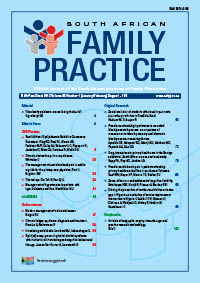The management of acute low back pain in adults: a guide for the primary care physician, Part II
Keywords:
chronic back pain
Abstract
When a patient presents with acute low back pain (LBP), any red flag warnings of serious disease should first be excluded. Yellow and blue flag warnings of psychological factors should be noted. A psychological opinion of patients with substantial psychological distress could be sought. Advice may be offered on the benign nature of non-specific LBP. The person should be encouraged to be physically active and to continue with normal activities as far as possible. A structured exercise programme, that includes aerobic activity, movement instruction, muscle strengthening, postural control and stretching, should be devised. A combined exercise and psychological treatment programme that includes a cognitive behavioural approach can be considered in patients with significant disability or substantial psychological distress. A course of acupuncture may also be added. Manual therapy, including spinal manipulation, could be considered. Paracetamol should be the first medication option. If this is inadequate, a nonsteroidal anti-inflammatory drug or weak opioid, or both, can be added. Individual risks for side-effects and the patient’s preference should be taken into account. Strong opioids should be considered in patients in severe pain, but for short-term use only. Antidepressants and gabapentine or pregabolin can be considered when there is a neurogenic component of the pain. Consider obtaining a surgical opinion on patients who have completed an optimal package of care and who still have persistent severe non-specific LBP. Progressive neurological fallout requires a surgical opinion.
Published
2012-04-25
Section
CPD
By submitting manuscripts to SAFP, authors of original articles are assigning copyright to the South African Academy of Family Physicians. Copyright of review articles are assigned to the Publisher, Medpharm Publications (Pty) Ltd, unless otherwise specified. Authors may use their own work after publication without written permission, provided they acknowledge the original source. Individuals and academic institutions may freely copy and distribute articles published in SAFP for educational and research purposes without obtaining permission.

